Ever since I had my first slice of wild rice and onion bread from Little Rooster, I was hooked. It’s local, affordable, delicious, and now, it’s delivered! I got a chance to go out to the Lubber’s Family Farm and meet with Casey Lubbers, the creator of Little Rooster. Here’s what we chatted about along with some original pictures I took!
Alexis Croswell: For those of us that don’t know, could you tell us how Little Rooster got started?
Casey Lubbers: I moved out of the house when I was eighteen, got my own place and decided I’d be a renaissance man; know a little bit about everything. So I decided to make bread. I got a bread maker, and that was okay, and I started trying to do it by myself and one thing led to another. I flew out to San Francisco and went to school out there at the San Francisco Baking Institute. Then I came back here and I started baking bread in a tiny old building that used to be a chicken coop (we converted it into a bakery) and so I was working during the day and baking at night. Eventually I was able to quit my day job and do this full time and we’ve been going forward ever since.
AC: When was it that you were able to make the transition to full time baker?
CL: Well, I quit my full time job about nine years ago. So I baked for probably two or three years doing both, which was rough. I’d get out of work, come here, and bake till probably two or three in the morning, go to bed and get up at six to go to work.
AC: Was there a specific customer you remember thinking, okay, now I can quit my day job and do this full time?
CL: I don’t think I remember a specific one. I remember just being on break at work and going to deliver some bread.
AC: Can you explain to us how the process of fermentation enhances the bread? How is it different from bread we’d get at a typical grocery store?
CL: Basically, what we’re doing is what they did 80 years ago [to make bread]. We take a dough, we mix it up and then it sits and ferments for a day. Then we take that dough and we put it in the main dough we’re making, say a whole wheat loaf. And what that does is all the enzymes and all the bacteria that is generated by that fermentation goes crazy when it gets into the new dough. So basically, if you think of starches as a ball of yarn, the enzymes will unwind that starch and you actually get a little more flavor out of it. It makes it a little bit sweeter. [For example] if you just eat flour there’s no taste there, that’s because the starch is all bound up and it can’t interact with your tongue. So that’s the way they always used to do it before they came up with high speed mixers and then they came up with additives to counteract the negative effects of that. If you do the fermentation that we do you get longer shelf life, but if you don’t you start putting additives and stuff in there and it all goes downhill. It’s not real bread, you’re eating a chemical soup that looks like bread.
AC: We have some folks who like to hear straight from the source how to grow vegetables, or in your case, bake bread. Any tips for first time bread (or cracker) makers?
CL: Well crackers are a lot easier, just start with a good formula then you need to roll it out perfectly even. Because if it’s even a little off when you bake it one part will be burnt and one part will be undercooked. Bread is a whole deal, especially if you do it how we do it. It takes two and a half days to make a loaf of bread.
AC: So, it’s probably just easier to buy Little Rooster?
CL: (Laughs) Yeah, just get it from us.
AC: When you started with the bread maker, did you go through different formulas until you got the best one?
CL: Oh, I had no idea what I was doing. I mean you get the bread maker and it comes with a recipe and you do that one and it’s fine. So I started making them by hand, and I knew that yeast died at 140 degrees, so I’d put the water in at 135 degrees. You want bread dough to come out of the mixer cool, like 75 degrees, and mine was coming out at about 135, so it tasted terrible. Of course my parents are all, “this is delicious!”. There’s a couple really good books out there [on bread making]. I would recommend “Bread” by Jeffery Hamelman or a great starting book is “Brother Juniper’s Bread Book” by Peter Reinhart.
AC: When we were walking around the farm earlier we saw some chickens, and a small garden. Can you tell us where the ingredients for the breads come from?
CL: The flour comes from King Milling just over in Lowell, we use Meadow Lands honey just a little south of here, and the eggs and herbs come from our farm.
AC: Any new products in the works? Flavors?
CL: Not bread wise really. We’re definitely working on some cracker flavors. We’re working with Cherry Republic on a cherry cracker. And a beer cracker, it’s really good. The weirdest thing is that you don’t taste the beer at all but it makes the cracker taste fantastic. We’re pretty excited about that.
C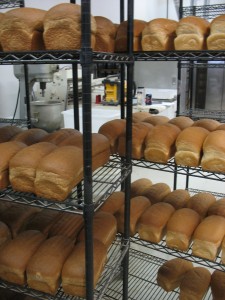 asey enjoys all of his bread creations, and is currently partial to the whole wheat, toasted as a BLT or a tuna fish sandwich. If you’re wondering what his day job was before bread making, he was a computer science major. So, within the converted chicken coop bakery that is making bread the old fashioned way, is an incredibly sophisticated ordering system and a team dedicated to getting the best bread to West Michigan, and to Doorganics, daily.
asey enjoys all of his bread creations, and is currently partial to the whole wheat, toasted as a BLT or a tuna fish sandwich. If you’re wondering what his day job was before bread making, he was a computer science major. So, within the converted chicken coop bakery that is making bread the old fashioned way, is an incredibly sophisticated ordering system and a team dedicated to getting the best bread to West Michigan, and to Doorganics, daily.
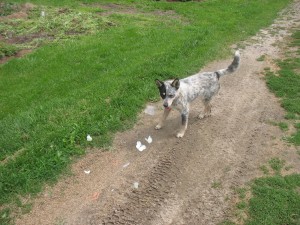 And my favorite farm friend, one of the Lubber’s family dogs, Tucker!
And my favorite farm friend, one of the Lubber’s family dogs, Tucker!


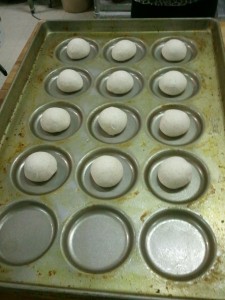
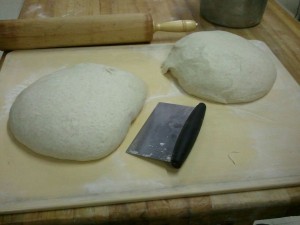
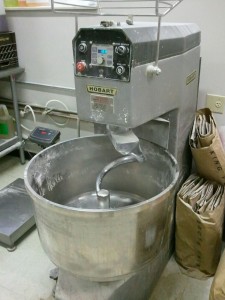

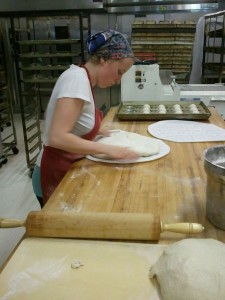



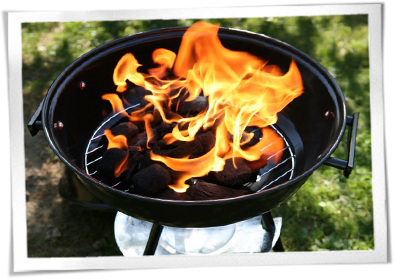
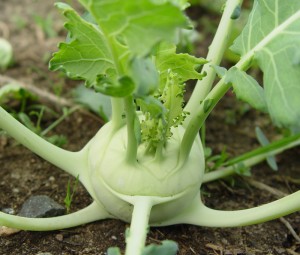
Leave a Reply
Want to join the discussion?Feel free to contribute!